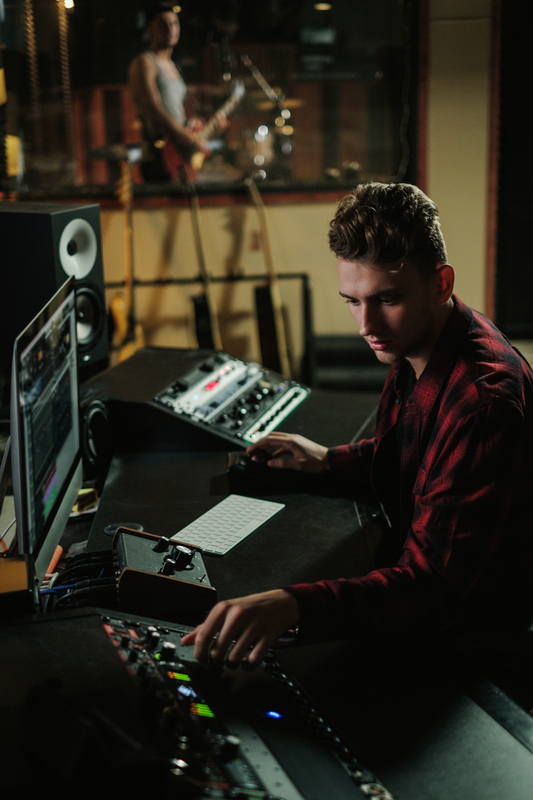4 Quick Tips For Setting Up a More Productive Studio Space
This is a guest post by Nicholas Di Lorenzo of Panorama Mastering.

Function, comfort, access and clutter. Get these under control and music making becomes much more seamless.
For producers, mixers, and mastering engineers, productive spaces are places that spark creativity; ones that get you into a flow state. Unfortunately, as creatives, our minds are complex; we gather, assemble, and do things in non-linear fashions.
Our spaces often end up resembling that. There’s either a spaghetti monster behind our desk from an ad-hoc setup, or pieces of gear sitting in front of us collecting dust. And when things we need aren’t within arms reach, we get annoyed.
As a studio owner and engineer, I wanted to optimize my studio for my creative needs. My overall goal for my workspace was to create something that was operator-friendly and focused on nurturing both my creative and practical needs.
Here are the steps I took to plan out a studio space that worked for me:
1. Think Function
What is the function of the room? Is it performing, recording, listening, writing? For me as a mastering engineer, my monitors perform the most critical function in the room. With just a chair and my speakers, along with some room measurement software, I went to set them up in the optimal no-compromise position for my space.
For you it might be recording a vocalist, tracking drums, recording synth parts; how is your studio set up to make that function of your space integrate seamlessly into your workflow?
2. Think Access
What will I need access to every day, every session? In my old workspace, my primary tools (analog mastering chain) were in a cabinet off to my side. It was a pain to access whenever I needed them and also not an effective way to use my gear when I needed to intently monitor the sound coming from my speakers. I ultimately opted to build a new mastering desk that housed all my analog gear right in front of me for the most ergonomic and effective access to my tools.
For a producer their most important factors may be access to a MIDI keyboard, drum pads, a recording studio, their mic cabinet, etc. Whatever you need, think about where it is located, how it is organized, and if it is easy to access for the purpose it serves.
3. Get comfy
As engineers and producers, we are stuck at a desk for hours on end. The single most valuable investment I have made in my health is a good chair. In the first 2 years of my career, I went through 3 cheap office chairs; in my fourth year I got over the sticker shock, and pulled the pin on a Herman Miller Aeron. It’s not only incredibly comfortable, but the lower back pain I used to experience from sitting for hours at a desk eventually disappeared.
This goes for more than just our seat, it also applies to our monitor screens, lighting, ambient room temperature, and general furniture. Is there a coffee table near your sofa to stop clients from putting drinks on the floor? (Trust me I learned this the hard way.)
4. De-clutter
I pulled every item, cable, gadget, and accessory out of my studio, laid them flat in my corridor and asked myself for each item: How often do I use this? If I didn’t have it, would I go out and buy it again? Is this important to keep?
Of what was left, I took a full inventory and then grouped them into function/categories. I then prioritized the functions and categories from most important to least; this dictated how everything would return back to my space.
Here’s a video I made showing my final workspace after considering all these things.
Nicholas Di Lorenzo is an audio engineer and the owner of Panorama Mastering.
Please note: When you buy products through links on this page, we may earn an affiliate commission.






